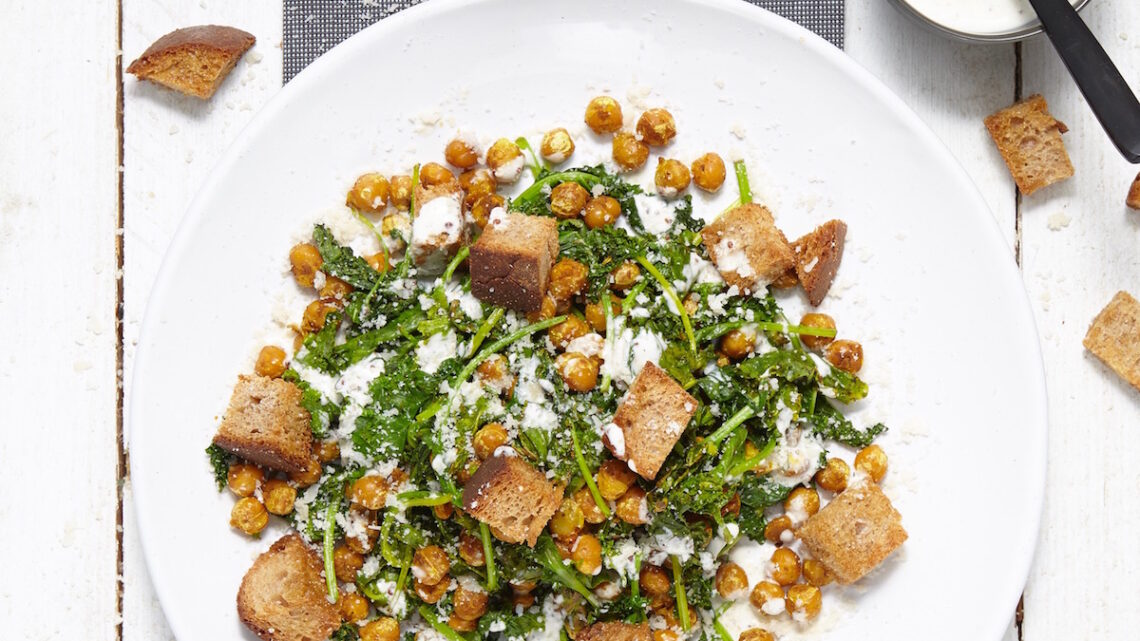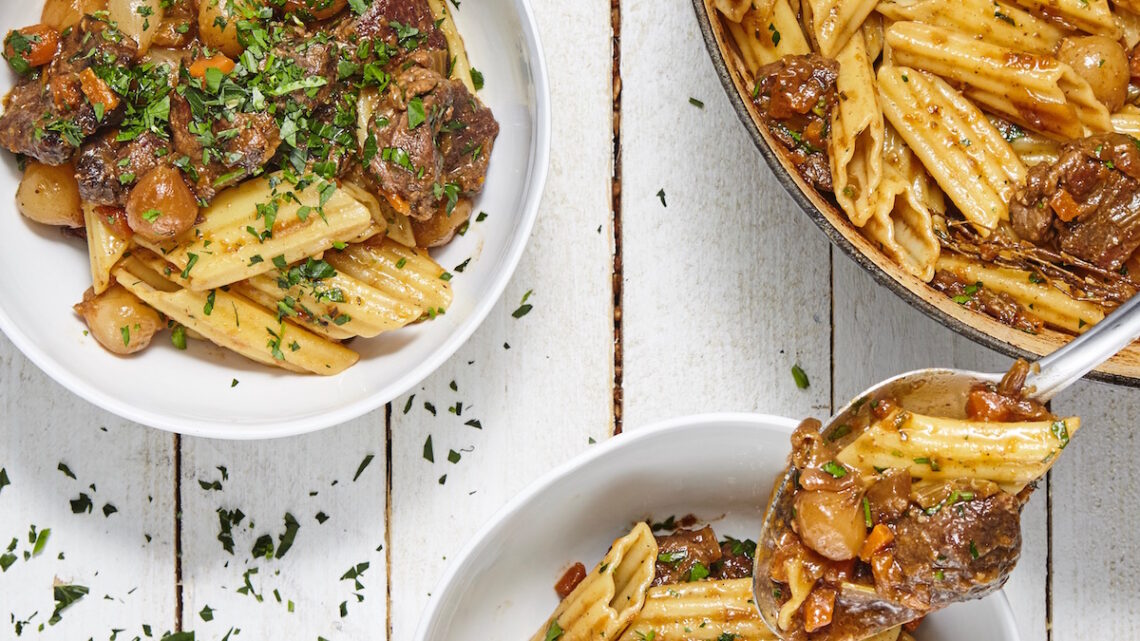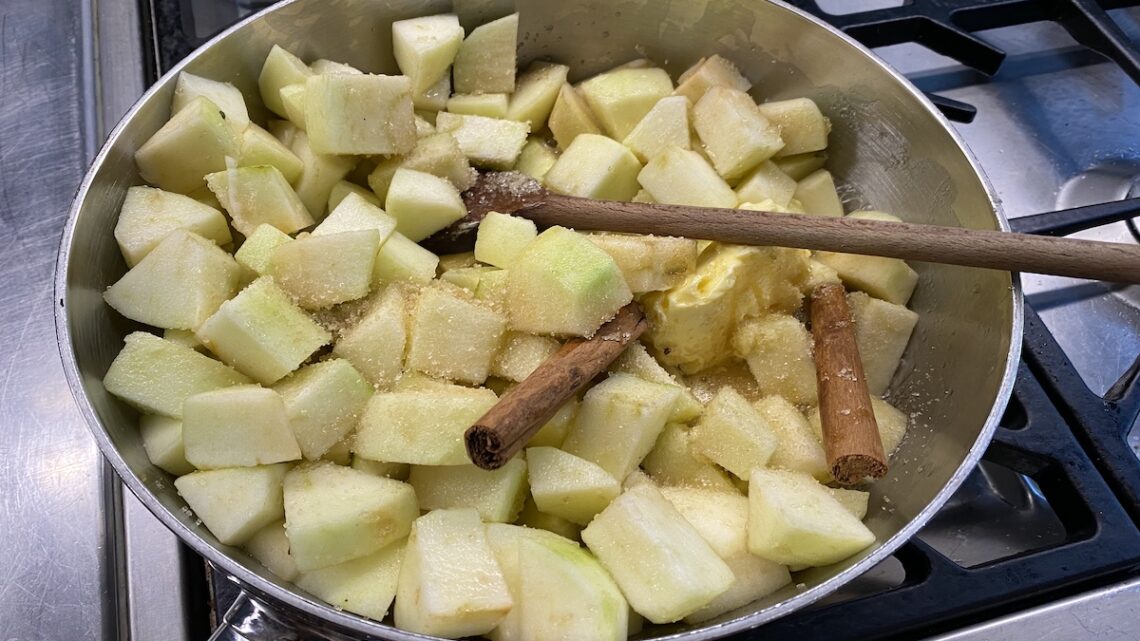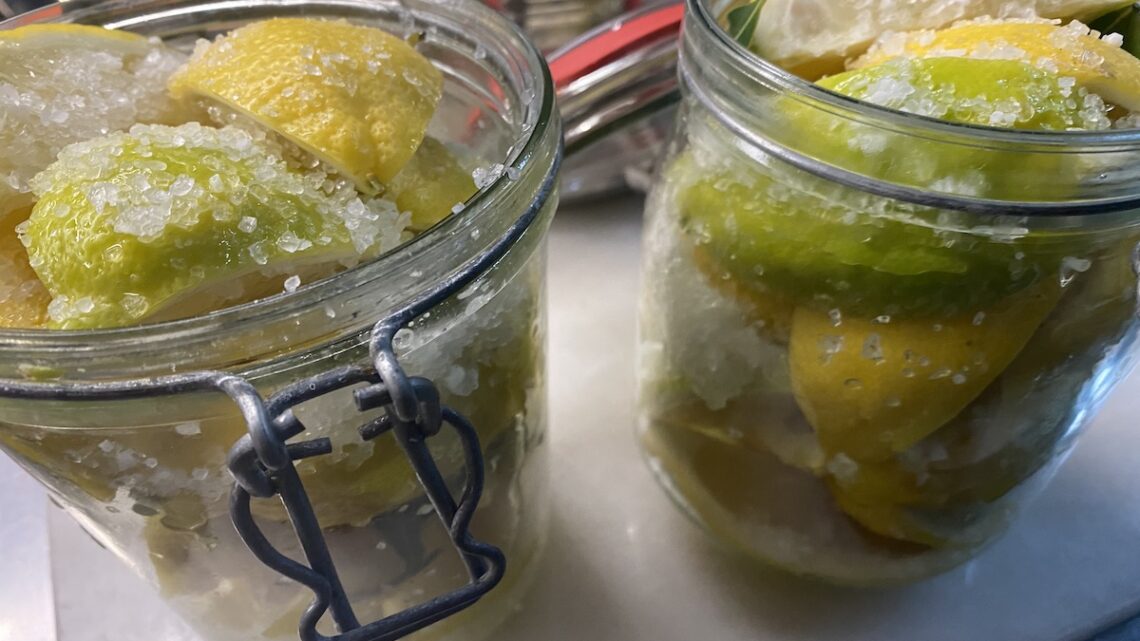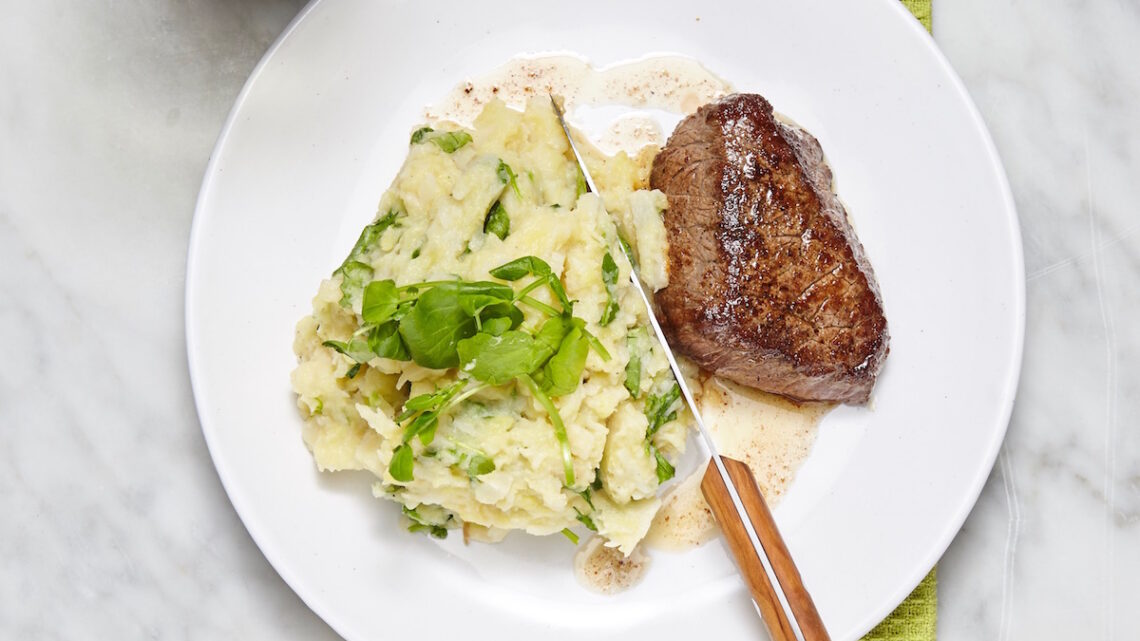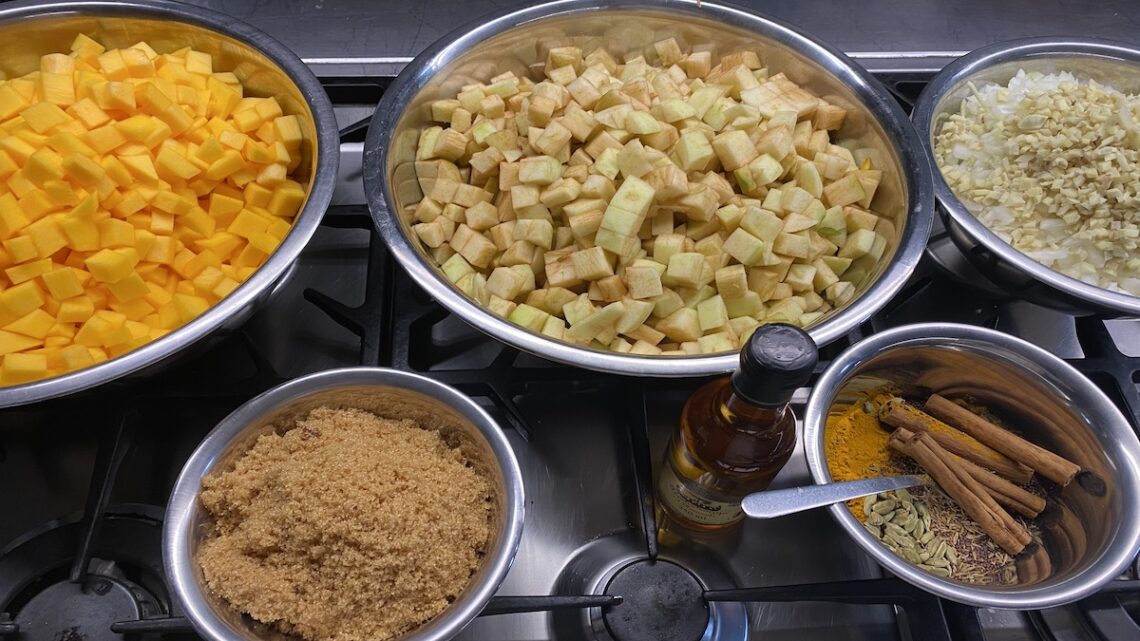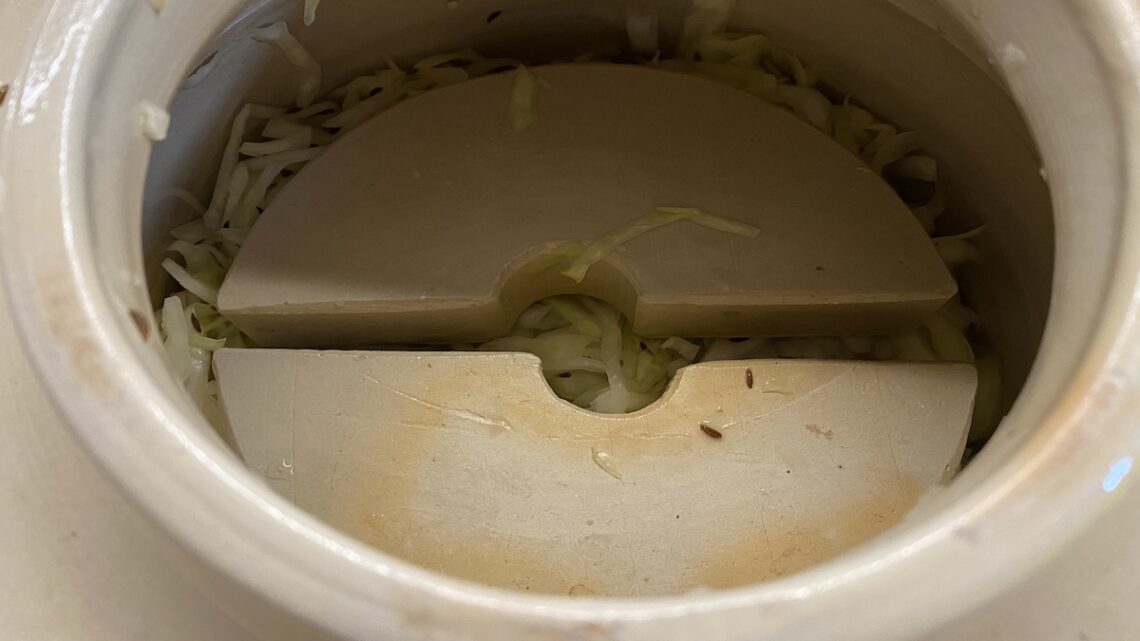Kale Caesar Salad
We love the idea of taking a classic and giving a twist using healthy and seasonal ingredients. This twist on a Caesar salad is vegetarian and the perfect salad to eat on cold days.
serves 2
Ingredients
600g baby kale
1 x 400g tin chickpeas
90ml mayonnaise
1 lemon
60g grated Parmesan
2 slices spelt bread
1 teaspoon ground turmeric
8 tablespoons olive oil
1 teaspoon mustard
salt and pepper
Method
Preheat an oven to 200°C. Cut the bread into 2 cm cubes. Place in a roasting dish with 4 tablespoons olive oil and roast in the oven for about 10-15 minutes until golden and crisp.
Drain the liquid from the chickpeas and rinse them under cold water. Dry well on some kitchen paper. In a small bowl, mix the mayonnaise together with 2 teaspoons mustard, a few drops lemon juice, salt and pepper. Thin the dressing down with a little water. It should be the consistency of pouring cream.
Heat a frying pan over medium heat with 4 tablespoons olive oil and fry the chickpeas and turmeric until golden, about 3 minutes. Season with salt and pepper.
Add the baby kale to the pan and fry for a further 2 minutes or until just wilted.
Spoon the kale and chickpeas over 2 plates and drizzle over the dressing. Scatter over the croutons and grated Parmesan before serving.
Nederlands
voor 2 personen
Ingrediënten
600gr babyboerenkool
1 x 400gr blikje kikkererwten
90ml mayonaise
1 citroen
60gr bakje geraspte Parmezaan
2 sneetjes speltbrood
1 theelepel kurkumapoeder
8 eetlepels olijfolie
2 theelepels mosterd
zout en peper
Bereiding
Verwarm een oven voor op 200°C. Snijd het brood in blokjes van 2 cm. Doe ze in een ovenschaal en meng ze met 4 eetlepels olijfolie. Zet de schaal in de oven voor ongeveer 10-15 minuten totdat ze goudbruin en knapperig zijn.
Giet het vocht van de kikkererwten af en spoel ze af, in een zeef, onder koud water, dep ze droog met wat keukenpapier. Meng in een kommetje de mayonaise met 2 theelepels mosterd, een paar druppels citroensap, zout en peper. Verdun met een beetje koud water tot de dressing de dikte heeft van slagroom.
Verwarm een koekenpan op medium vuur met 4 eetlepels olijfolie en bak de kikkererwten en kurkuma goudbruin voor ongeveer 3 minuten. Breng op smaak met zout en peper.
Voeg de babyboerenkool toe aan de pan en bak nog eens 2 minuten.
Schep de boerenkool over 2 borden en lepel de dressing er overheen. Bestrooi met de croutons en de geraspte Parmezaan.
Elderberry cordial
This cordial is perfect as a mixer with water, sparkling water, in cocktails or as a fruity salad dressing.
Makes about 500 ml
Ingredients
500g elderberries
300ml water
300g sugar
60ml lemon juice
Method
Put the elderberries, water and sugar into a pan and bring to the boil, stirring to dissolve the sugar. Once boiling, turn down the heat and simmer for about 25 minutes until the berries have popped open and the liquid has reduced down to a syrup. Stir in the lemon juice.
Remove from the heat and strain through muslin. Pour into sterilised bottles and store in the fridge for up to 6 months.
Venison Stew
Venison season is beginning. We often find the flavour too strong or are not sure how to treat it. This recipe for a comforting stew made with young venison, is the best place to start.
serves 3
Ingredients
750g Amsterdam 'damhert' venison or young venison for stewing
1 onion
2 cloves garlic
1 carrot
2 sticks celery
2 sprigs thyme
1 bottle dark beer
1 chicken stock cube
1 jar baby onions with ‘appelstroop’
250g penoni pasta
1 small bunch flat leaf parsley
5 tablespoons olive oil
salt and pepper
Method
Preheat an oven to 150°C. Finely chop the onion, garlic, carrot and celery.
Heat a pan over medium heat with 2 tablespoons olive oil. Dry the venison on kitchen papier and season with salt and pepper. Fry in the hot pan until browned. Don’t overcrowd the pan. It’s better to fry the venison in two batches. Place the browned meat in a bowl and set aside.
Add the chopped vegetables to the pan with 2 extra tablespoons olive oi and sweat for 7-10 minutes. Add the thyme sprigs, beer, chicken stock cube, 750 ml water and black pepper to the pan. Bring to the boil and add the meat. Cover with a piece of grease proof paper and place the pan in the oven.
After two and a half hours, add the baby onions and 1 tablespoon of their juices to the stew. Return to the oven for a further 30 minutes until the meat is soft and tender. Bring a pan of salted water to the boil.
Cook the pasta for about 10-12 minutes until al dente. Drain the pasta and return to the pan with 1 tablespoon olive oil. Finely chop the parsley. Mix the pasta through the stew and half the parsley. Divide between 3 plates, sprinkle with the remaining parsley and serve.
Nederlands
voor 3 personen
Ingrediënten
750gr Amsterdams damhert stoofvlees
1 ui
2 teentjes knoflook
1 peen
2 stengels bleekselderij
2 takjes tijm
1 fles bok bier
1 kip bouillonblokje
1 potje zilveruitjes met appelstroop
250gr penoni pasta
1 klein bosje bladpeterselie
5 eetlepels olijfolie
zout en peper
Bereiding
Verwarm een oven voor op 150°C. Snijd de ui, knoflook, peen en bleekselderij fijn.
Verwarm een pan op medium vuur met 2 eetlepels olijfolie. Dep de stukjes hert droog met een stukje keukenpapier en bestrooi met zout en peper. Bak ze rondom goudbruin. Bak niet te veel in een keer. Het is beter om het hert in twee keer te bakken. Doe het vlees in een kom en zet opzij.
Voeg de gesneden groenten toe aan de pan met 2 extra eetlepels olijfolie en smoor 7-10 minuten. Voeg de takjes tijm, het bockbier, het kipboullionblokje, 300 ml water en wat zwarte peper toe. Breng aan de kook, voeg het vlees toe. Leg een stukje bakpapier op het vlees en zet de pan in de oven.
Voeg na een uur de uitjes samen met het vocht uit het potje toe aan de stoof. Zet nog eens 30 minuten in de oven totdat het vlees zacht en mals is. Breng een pan water met zout aan de kook.
Kook de pasta in 8 minuten beetgaar. Giet het water van de pasta af, doe terug in de pan en meng met 1 eetlepel olijfolie. Snijd de peterselie fijn. Meng de stoof door de pasta samen met de helft van de peterselie. Verdeel de pasta over 2 borden en strooi de resterende peterselie er overheen.
Apple sauce
This is great to use with fatty meats such as pork and duck or in desserts. Try and get Bramley apples to make it. They're incredibly tart which works well flavour-wise and they break down to a beautiful thick puree.
Ingredients
5 Bramley apples
50g butter
75g demerara sugar
dash of water
lemon juice to taste
2 pinches cinnamon
Method
Peel, core and slice the apples.
Melt the butter in a pan over medium-low heat. Add the apples, sugar and water and cook gently until the apples are soft and pureed.
Stir in the cinnamon and lemon juice, then transfer to a sterilised jar. Allow to cool before serving.
Roasted tomato soup
The ultimate recipe for tomato soup. You won't buy it from a can ever again!
serves 4
Ingredients
1,5 kg ripe plum tomatoes
3 cloves garlic, peeled
2 sprigs thyme
2 bay leaves
2 onions, finely sliced
vegetable stock, about 750ml (we use an organic vegetable cube)
olive oil
salt and pepper
Method
Preheat the oven to 220C. Rinse the tomatoes and cut them in half. Place in a roasting dish together with the garlic, thyme and bay leaves. Drizzle generously with olive oil and season well with salt and pepper. Roast in the oven for about 30 minutes until the tomatoes are well roasted and they have released their juices.
Heat a large pan with a good glug of olive oil over medium heat. Add the onions and sweat until soft for 7-10 minutes. Add the roasted tomatoes with their juices and vegetable stock to cover. Bring to the boil and simmer gently for about 15 minutes.
Blend the soup in a blender or with a stick blender until smooth. Season, if needed with salt and pepper. Reheat the soup and serve as is or with creme fraiche and basil.
Preserved Lemons
Preserved lemons are easy to make. They are used a lot in Middle Eastern and North African cooking to add a citrusy boost to dishes.
Ingredients
4-6 lemons, washed per jar
1 tablespoon salt per lemon
1-2 bay leaves per jar
Method
Sterilise a couple of jars (whatever size you have).
Cut the lemons lengthways into quarters keeping the stalk end on.
Mix them with 1 tablespoon salt per lemon and stuff them into the jars as tightly as you can, add 1-2 bay leaves per jar. Gradually over the course of a few days, liquid will be released from the lemons. The liquid should cover the lemons completely.
At the end of that time they should be refrigerated. The lemons will last for a year if you make sure you use a clean spoon whenever you remove any from the jar. To use, discard the flesh of the lemons and use the rind.
Parsley Root, Apple and Watercress ‘Stamppot’ with Gasconne Steak
When the weather turns cold and wet, we start yearning for comforting and filling dishes. Here, we've taken an old Dutch classic of steak and stamppot and given it a slight twist.
serves 2
Ingredients
1kg floury potatoes
1kg parsley root
1 Elstar apple
1 bunch watercress
2 Gasconne dry aged steaks of 150g each
100g butter
2 tablespoons wholegrain mustard
3 tablespoons olive oil
milk (a splash to make the mash creamy)
salt and pepper
Method
Peel the potatoes, parsley root and apple. Cut all into chunks (removing the core from the apple) and place in a pan with water and salt. Bring to the boil and simmer for 15-20 minutes until the ingredients are soft.
Drain off the water and return the vegetables to the pan. Using a potato masher, mash them as smooth as you can. Add 60g of the butter and enough milk to make it smooth and creamy. Season with salt and pepper and keep warm over a low heat.
Season the steaks with salt and pepper. Heat a frying pan over medium heat with 3 tablespoons olive oil. Fry the steak until golden on both sides, about 2-3 minutes per side. Add the remaining butter and allow to turn light brown. Spoon over the steaks.
Transfer the steps to a plate and cover loosely with aluminium foil. Allow to rest for 5 minutes. Remove the tough stalks from the watercress and roughly chop the leaves. Add to the potatoes and mix through.
Spoon the ‘stamppot’ on to a serving plates and set the steak on the side. Add any juices that have gathered from resting the steak to the butter in the pan, reheat gently and spoon over the steaks. Serve with the wholegrain mustard.
voor 2 personen
Ingrediënten
1kg kruimige aardappelen
1kg peterselie wortel
1 Elstar appel
1 bos waterkers
2 Gasconne dry aged kogelbiefstuk van 150 gr per stuk
100gr boter
2 eetlepels grove mosterd
3 eetlepels olijfolie
melk (een scheutje om de puree smeuig te maken)
zout en peper
Bereiding
Schil de aardappelen, peterseliewortel en appel. Snijd ide groenten in grove stukken (verwijder het klokhuis van de appel) en doe ze in een pan water met zout. Breng aan de kook en laat 15-20 mintuten zachtjes koken totdat de groenten zacht zijn.
Giet het water van de groenten af. Stamp ze fijn met een aardappelstamper. Voeg 60 gr boter toe en genoeg melk toe om het smeuig te maken. Breng op smaak met zout en peper en houd warm op een laag vuurtje.
Bestrooi de biefstuk met zout en peper. Verwarm een koekenpan op medium vuur met 3 eetlepels olijfolie. Bak de biefstuk goudbruin, 2 minuten aan elke kant. Voeg de resterende boter toe en laat licht bruin worden. Lepel de boter af en toe over de biefstuk.
Leg de biefstuks op een bord en dek licht af met een stukje aluminiumfolie en laat 5 minuten rusten. Verwijder de grove steeltjes van de waterkers en snijd de waterkers grof. Voeg toe aan de stamppot en roer er goed doorheen.
Lepel de stamppot op 2 borden en leg de biefstuk ernaast. Voeg sappen die op het bord van de biefstuks liggen, toe aan de koekenpan, warm lichtjes op en lepel over de biefstuks. Serveer met de grove mosterd.
Pumpkin & apple chutney
If you happen to be passing a farm store, pumpkins and apples are fully available. Make this delicious apple and pumpkin chutney to enjoy through the winter with curries, cold cuts and cheese.
Ingredients
4 tablespoons sunflower oil
2 onions, peeled and finely chopped
100g ginger, peeled and sliced into thin strips
1 red chilli, deseeded and finely chopped
15 cardamom pods, smashed open
2 cinnamon sticks
1 tablespoon black mustard seeds
2 teaspoons cumin seeds
5 cloves garlic, peeled and finely chopped
1 kg pumpkin, peeled and cut into small cubes
500g Bramley apples, peeled and cut into small cubes
1 teaspoon ground turmeric
500g light brown sugar
300ml cider vinegar
Method
Heat the oil in a large pan, then gently fry the onions until soft. Add the garlic, ginger, chilli, cardamom, cinnamon, mustard and cumin seeds and turmeric and fry together for 5 minutes.
Add the pumpkin and apples to the pan. Cook for 10-15 minutes until the ingredients are softened.
Stir in the sugar and let it melt around the vegetables. Simmer for 5 minutes.
Pour in the vinegar, season with 2 teaspoons salt and bring to a simmer. Cook, stirring regularly for about 30 minutes or until the apple has cooked down and the pumpkin pieces are tender. There should be a little syrupiness in the pan.
Spoon into sterilised jars and seal. They chutney can be eaten straight away or left to mature in a dark place. Store for up to six months.
Sauerkraut
It's easier than you think to make your own sauerkraut. Have your own supply right through the cold months.
Here's the recipe:
Ingredients
1,2 kg finely shredded white cabbage
1 teaspoon caraway seeds
5 teaspoons fine salt
Method
Place the finely shredded cabbage in a large bowl together with the caraway and salt. Using your hands, knead and squeeze the cabbage for about 10 minutes until the appearance and texture change and water begins seeping from the cabbage.
Place in a jar or container, weight it down and cover with a muslin cloth. Allow to ferment for at least 5 days. This will be a very young sauerkraut. Ferment up to 2 weeks until you have reached your desired strength of flavour.
Place into sterilised jars, cover with a lid and keep in the fridge for up to 6 months.
Click on the link below to see how to mix the cabbage:
Cooking workshops
Our cooking workshops are tailored to make you want to cook at home, inspire you and introduce you to new ingredients.
All the ingredients are easily obtainable from good supermarkets and food stores. The recipes which you cook and enjoy during the workshop will be sent to you after the event so that you can recreate them at home to impress your friends and family.
We start with a minimum of 8 people and all our cooking workshops follow RIVM guidelines regarding hygiene and social distancing.
So come with a group of family, friends or colleagues for an unforgettable evening. Book your cooking workshop now!

